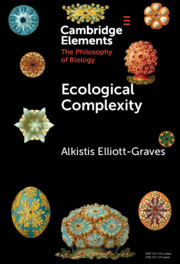Element contents
Ecological Complexity
Published online by Cambridge University Press: 20 July 2023
Summary
- Type
- Element
- Information
- Online ISBN: 9781108900010Publisher: Cambridge University PressPrint publication: 10 August 2023
Bibliography
- 7
- Cited by



